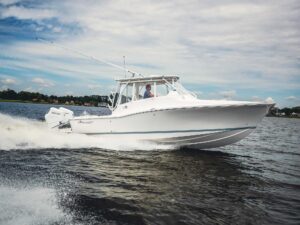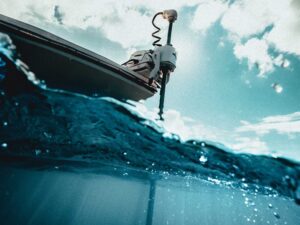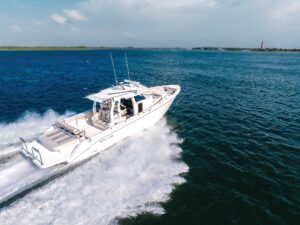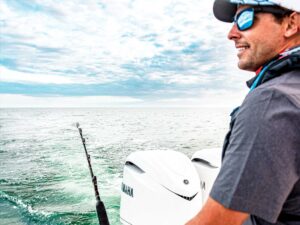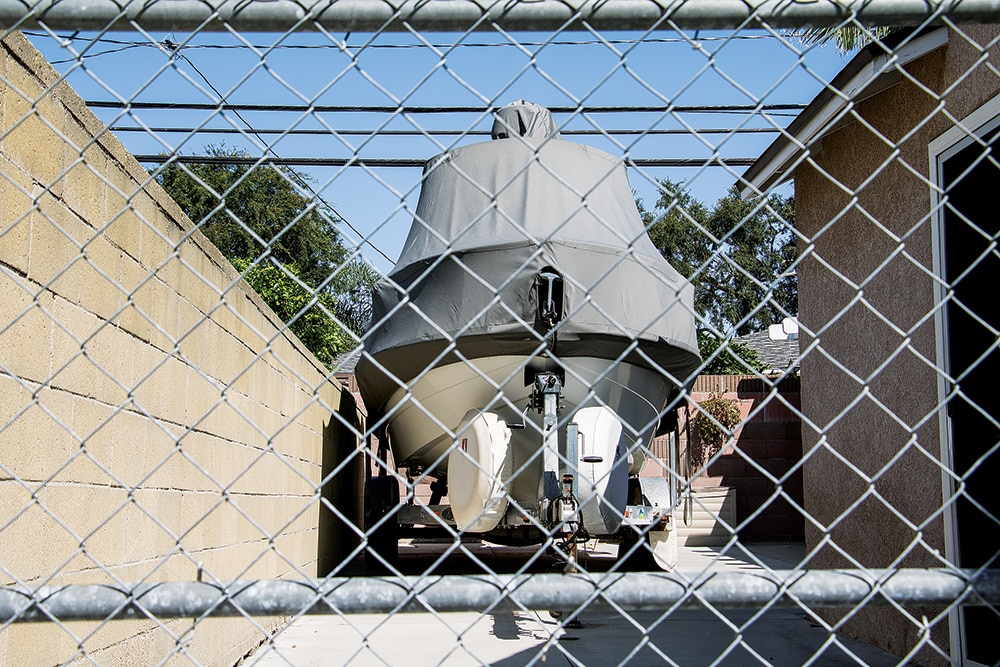
Thefts of large outboard engines have ticked upward over the past six months in coastal states of the Southeast and mid-Atlantic regions, according to a number of marine insurance companies. Taking care to safeguard your motors, particularly when your boat is in storage, can be as simple as parking properly and using relatively inexpensive locks.
“There has been a rash of organized thefts of multiple outboards throughout Florida, Georgia, South Carolina and Virginia,” says Mark Yearn, of Norman-Spencer Agency, an insurance provider offering coverage for boat dealers and marinas nationwide.
Armed with cordless impact wrenches and power saws, teams of thugs strike boat dealerships and storage yards at night, cutting through fences, unbolting large outboards and muscling them into trucks, says Yearn. Boats in dry storage or on trailers are the easiest targets. Multiple outboard installations attract the greatest attention, giving theft rings a big payoff.
“This is a professional operation, and there is good reason to believe that the stolen units are being loaded into containers and sold overseas,” Yearn adds. As many as a dozen outboards have vanished in a single haul.
Marine electronics also disappear during these break-ins, but outboards ranging from 150 to 350 hp, weighing as much as 780 pounds and costing upwards of $30,000 each, represent the higher value targets.
Unlike boat hulls, outboards are not registered with state departments of motor vehicles, so they prove difficult, if not impossible, to track, Yearn points out. That makes outboards well-suited to the black market.

Prevention Is Key
Since the chances of recovering a motor dwindle from slim to none once it’s stolen, the key lies in prevention. But how can you protect your outboards?
“Thieves look for the low-hanging fruit,” says Bill Gilbert, of Caribee Boat Sales in Islamorada, Florida. “You need to make things as difficult and time-consuming as possible for thieves, giving them pause to rethink and then look elsewhere for easier targets.”
Based on tips from Gilbert and others in the marine and insurance industries, here are five ways to prevent outboard thievery. Use as many of these suggestions as possible to thwart the efforts of nefarious types.
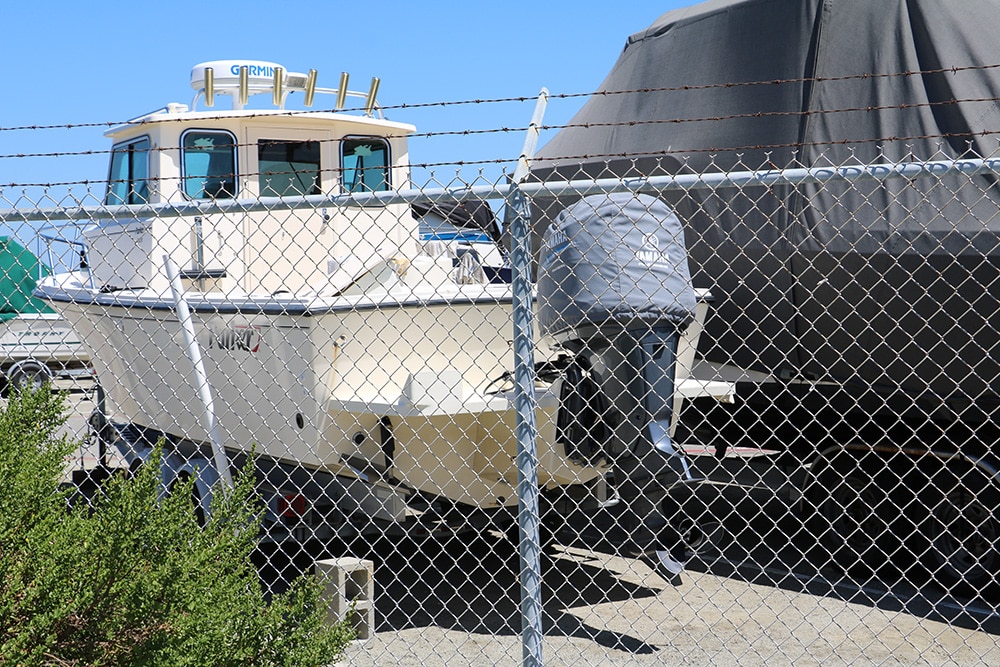
Keeping Boat at Home
Storing your trailer boat at your place of residence, behind a locked gate, offers the greatest security. Even when you’re not home, friendly neighbors can help keep an eye on your place and notify police of suspicious activity. One important tip: Avoid posting on social media that your family’s on vacation or otherwise not home. That can tip off opportunistic thieves to an easy target.
Home-security devices, such as motion lights and security cameras, can also deter larceny. However, one of the most effective measures is man’s best friend. Whether it’s a fox terrier or Doberman pinscher, a dog that alerts to the presence of strangers is the greatest alarm of all. The canine need not be fierce but should possess a loud bark to let you and neighbors know something’s amiss. A prominent “Beware of Dog” sign is also effective in spooking would-be thieves.
Keeping Boat at a Storage Yard
If you’re forced to store your boat at a yard (many of which are part and parcel of boat dealerships) or in a dry rack at a marina, look for security measures aside from a fenced perimeter, locks on the gates and razor wire atop the walls. At Caribee Boat Sales, for example, video surveillance monitors the property around the clock. Perimeter beams alert security companies of a breach anywhere around the grounds.
Crooks live by night, using darkness to cloak their deeds, so look for storage facilities that are well-illuminated in the hours between sunset and sunrise. Security guards or dogs patrolling the premises during off hours are also beneficial.
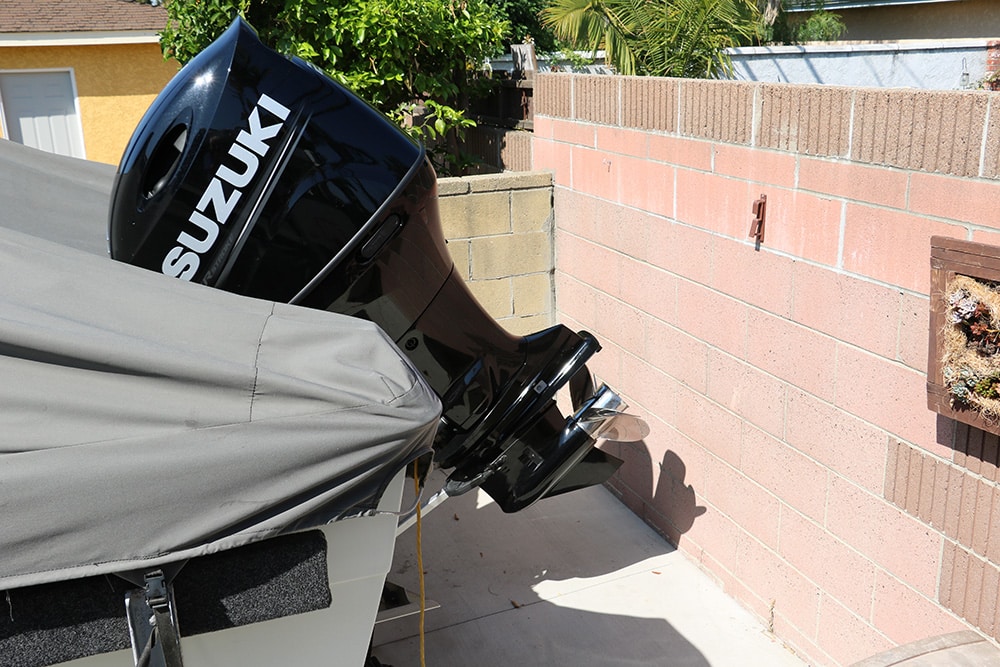
How to Park Your Trailer Boat
The way you park your trailer boat matters. If possible, back the boat up to a concrete building or solid block wall so there’s little room for bagmen to maneuver around the transom. Don’t back up to a chain-link or wooden fence on the property line, as thieves will quickly cut through these meager defenses.
If you use dry-stack storage, ask for a slot on the upper levels, which makes access difficult for crooks. Boats on the ground level are the most vulnerable.
Benefits of Outboard-Motor Lock
A McGard outboard-motor lock (about $28) represents cheap insurance. It threads over one of the transom bolts to serve as a mounting nut, and only a specially keyed socket wrench can remove it. Otherwise, the cylinder around the lock spins freely, even in the fierce grip of a pair of channel-lock pliers.
A determined thief might eventually defeat the lock by cutting through the transom bolt, but the extra effort will cost valuable time in which he stands a chance of getting caught in the act. A smart burglar will move on to a less risky target.
Electronic Security for Boat
Companies such as GOST, Siren Marine and SPOT offer the ability to monitor your boat and motors around the clock with onboard sensors (both wired and wireless) that connect to apps on your smartphone, tablet or computer.
These systems offer tracking devices such as the compact SPOT Trace (about $50 plus $15 monthly service plan), which can be hidden under the hood of your outboard. It activates with movement and alerts you via text and email, then uses satellite technology to track the location of the outboard.
However, the greatest value lies in the ability to alert you immediately if someone tampers with the boat while it’s in storage, says Daniel Harper of Rhode Island-based Siren Marine.
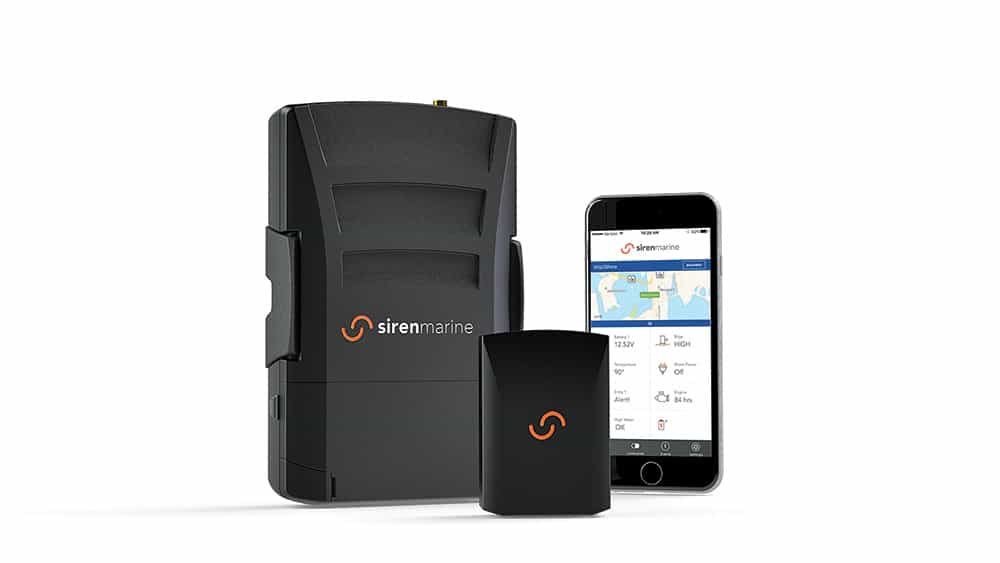
Some systems are highly customizable, with a multitude of sensors to suit the security needs of different boaters. For instance, with a remotely stored trailer boat, a motion detector can sense approaching thieves at a distance of 3 to 5 feet from the hull.
False alarms from animals, such as guard dogs and foraging raccoons, plague some systems using motion detectors, but adjusting the sensitivity can resolve this issue. Siren, for example, calibrates its motion sensors according to body mass. “This allows it to distinguish between humans and smaller creatures to eliminate false alarms,” Harper says.
An accelerometer serves as another useful sensor in preventing outboard theft. “It detects any minute movement or vibration of the boat, motors or trailer,” Harper points out.
Sensors can also take the form of pull-switch cables connected to motors or other valuable onboard equipment. Disconnecting or cutting the cable activates the sensor. These can be placed in small, common items, such as canvas snaps that activate when someone unbuttons the boat cover.
These boat security systems can be programmed to sound an on-site alarm, such as a piercing siren and blinding strobe light, and send you an immediate alert via a cellular network, allowing you to contact the proper authorities or respond in person. They also allow you to turn the system on and off remotely with your mobile device or computer.
Put these security measures to work in and around your boat to protect yourself from becoming a victim amid the rising number of outboard thefts.

